We’ve all seen it, whether we’ve taken notice of it or not: a shrub that lines the front of suburban homes, almost any fast food drive-thru, and is desired for its evergreen nature and variegated foliage. The thing is, the landscaping appeal of this shrub can be accomplished with native species.

Nandina domesitca- commonly known as Heavenly Bamboo or Sacred Bamboo- is a small evergreen shrub that is noted for its leaf variegation and brilliant red berries. Nandina is frequently used en masse along the front of homes and to create borders. It can tolerate full sun to full shade, a wide range of soil types, and requires practically no maintenance given its irregular, upright limb form.
Why, then, is it so problematic? First, it is a tired and overused plant – it litters the built environment and is so common that it barely registers as an intentionally planted shrub. Second, the plant has become invasive in natural environments, and the berries are toxic wildlife.
So, you’ve heard that native landscapes are crucial to ecosystem restoration and you’ve made the commitment to convert your own yard to a native landscape, but where do you begin?! While everything about site preparation could fill a book, in this series we hope to highlight the native plant alternatives to popular landscape plants. Nandina domestica is the first installation of this series.
Nandina does not contribute anything to the local environment. The fact that it is a non-native species means it is not contributing anything to the functionality of the surrounding ecosystem. Neither flora nor fauna naturally rely on the presence of Nandina for their survival- local wildlife simply has not evolved alongside it, and thus has no functional place within native ecosystems of the Piedmont, or even North America.
The leaves and berries of Nandina are contain highly toxic hyrdrogen cyanide, which can be fatal to wildlife and domestic animals. Berries are an important food source for many birds, and bright red berries make this calorie-rich food source easy for birds to find. Birds will happily gorge themselves on the readily available food source unaware of its toxicity. We want bird attractant shrubs, not deadly berries.
In addition to the deadly nature of Nandina, it is also a highly invasive species – a non-native that quickly establishes under many different conditions so quickly that it begins to grow where it was not intended and displaces native plant communities. Invasive species can take over a landscape quickly and harm the surrounding ecosystem: if you’ve ever tried to remove an established area of Nandina then you know that the recurring sprouts are an ongoing challenge to removal. One of the reasons invasive species become invasive is that nothing has evolved to eat them. The combination of Nandina’s highly invasive nature and its toxicity to wildlife and domestic animals make it quite the nuisance.
So, we know that Nandina is a toxic and invasive species that should be removed from the landscape, but what can be used in its place? There are many native plant options depending on what features you are trying to recreate. Whether it’s the evergreen foliage, color on the landscape, presence of fruit, or to attract wildlife, there is a native plant with each of these features that can be used in place of Nandina.
Evergreen Alternatives
Nandina is popular because of its evergreen nature. When shrubs are used in residential and commercial settings, they are intended to make a visual impact throughout the year, thus the desire for low maintenance evergreens. There are a number of native evergreens that make great alternatives for Nandina. (Please note that the evergreen shrubs discussed below are naturally found in the Coastal Plain region of Georgia but are able to thrive as plantings amongst the built environment of the Piedmont and are not thought of as problematic.)
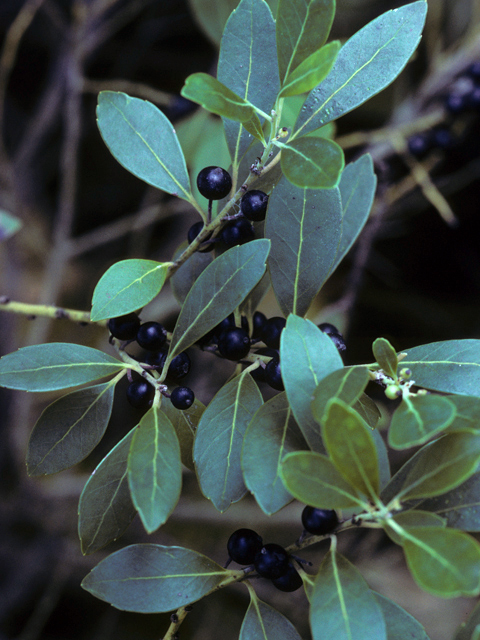
Inkberry (Ilex glabra) is an excellent evergreen alternative to Nandina for a full sun to part shade foundation planting or hedge rows. Inkberry also has the benefit of attracting wildlife with its dark berries. Though the berries of the Inkberry are not showy like those of Nandina, it serves an important function by providing a food source for various bird species.
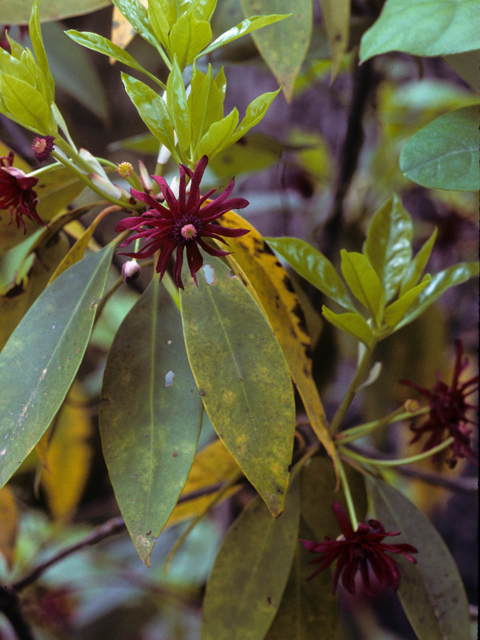
Another great native evergreen shrub that serves as a bird attractant is Florida Anise (Illicium floridanum). This is a great choice for shadier and more moist areas, though it can tolerate slightly drier soils and filtered sun. The dense foliage provides shelter for birds and other wildlife and unique star-shaped blooms produce an anise spice fragrance.
Doghobble (Leucothoe fontanesiana) is another native shrub that is well adapted to a variety of site conditions. In addition to being an evergreen, its foliage has a slightly variegated appearance that somewhat resembles the foliage of Nandina.
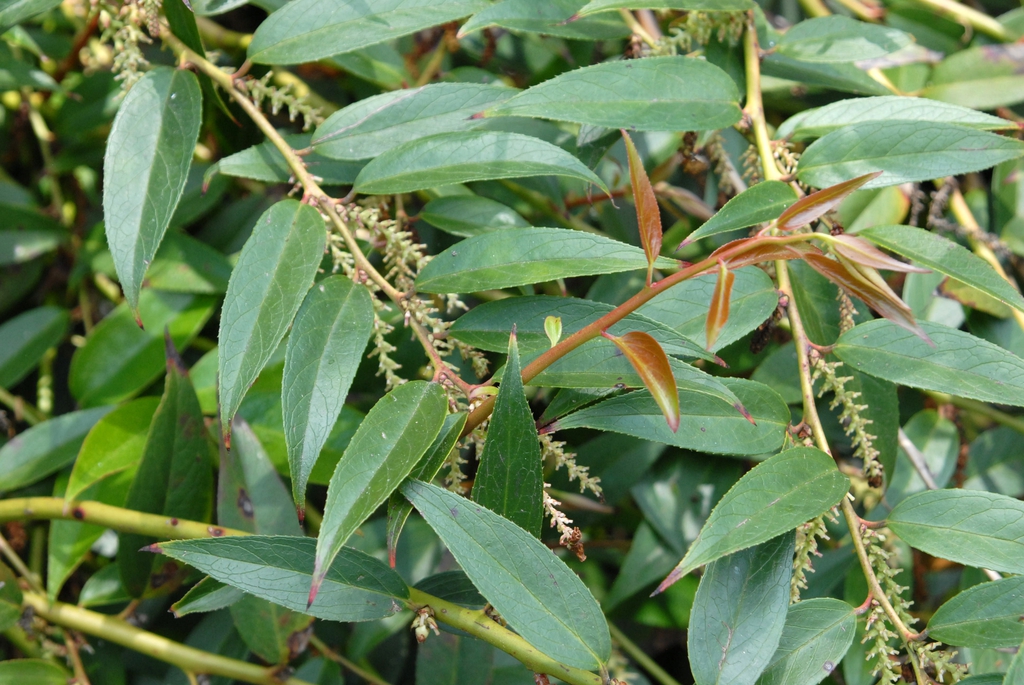
Red Berry Alternatives
If the presence of brilliant red berries is an aspect of Nandina you are looking to replicate with a native shrub, then you’re in luck! There are plenty of native species that are covered in striking red berries.

Winterberry (Ilex verticillata) can tolerate full sun or part shade, but produces more berries in sunnier areas. It is important to note that Winterberry needs to be pollinated to produce berries, so both a male and female plant are needed. They make a fantastic filler shrub that will have birds flocking to devour the abundant fruit.
Yaupon Holly (Ilex vomitoria) is a large shrub or small tree that is absolutely covered in red berries. As mentioned previously, red berries are a beacon to birds. The abundance of berries on Yaupon Holly make for an all-you-can-eat style buffet for birds. This sun-loving evergreen shrub provides oft desired seasonal interest when its limbs fill with berries in the Fall.
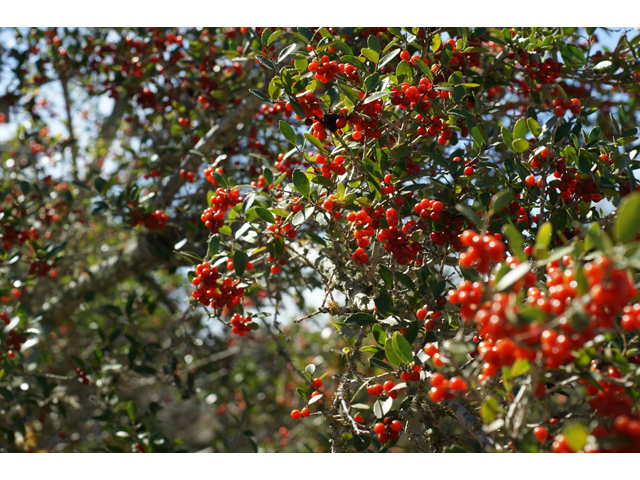
Red Chokeberry (Aronia arbutifolia) is a shrub that has a wide range of light and soil tolerance. In addition to the presence of red berries, Red Chokeberry also produces dainty white flowers in the spring and has notable fall foliage that is a good replacement for the variegation found in Nandina.

Will Stuart, wildflower.org
Vibrant Fall Foliage
Speaking of the foliage of Nandina, let’s discuss a few more native shrubs that can provide the same kind of impact, even if the foliage’s vibrance is seasonal.
Possumhaw Viburnum (Viburnum nudum) is a versatile, large deciduous shrub that puts out a stunning show of deep red color in Fall that is reminiscent of the variegation found amongst the Nandina leaves. This shrub also boasts attractive white Spring blooms followed by clusters of luscious dark berries, making it a favorite of birds and other small mammals.
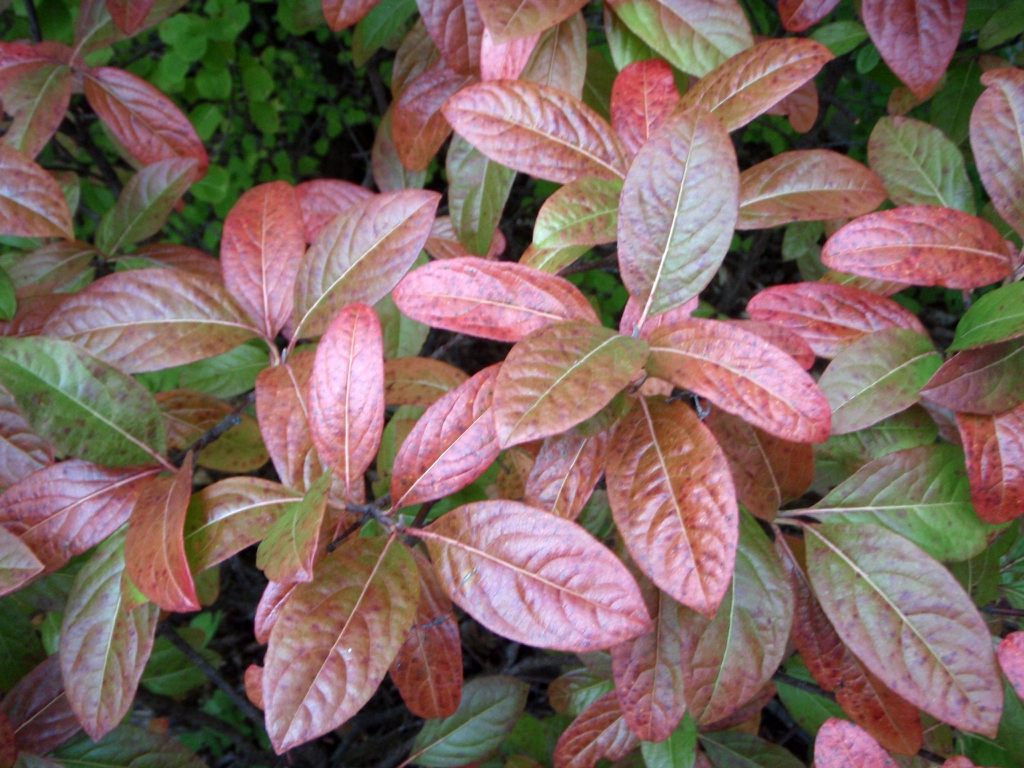
A smaller native option for fall foliage that rivals Nandina is Virginia Summersweet (Itea virginica). This shade-loving shrub has the double impact of unique elongated flower spires in Spring, followed by the striking purple to red foliage change come Fall. These beauties retain their fall foliage for an extended time, remaining into winter.

No matter what it is you find attractive about Nandina, there is a native species that can easily fill the space in your heart for this nuisance of a shrub. We hope that this entry helps guide you toward native species that make for excellent alternatives to dangerous invasive plants and that you’re already making a game plan for riding your own yard of this pest.
